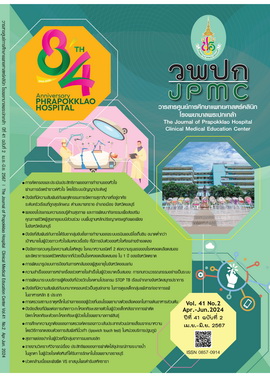Clinical Quiz
Main Article Content
Abstract
A 65-year-old woman with breast cancer came for a bone scan for initial staging. She was injected with 20 mCi of Technetium-99m MDP (methylene diphosphonate) intravenously. She was scanned 2 hours after the injection with planar images. SPECT/CT (single photon emission computed tomography/computed tomography) at the thoracic spine and pelvic bones was done at the end of the study. The planar images showed focal increased uptake at the T7, which was suspected of bone metastasis. Another focal lesion at the right sacroiliac joint was compatible with degenerative change. Soft tissue uptake at the left anterior chest wall was in keeping with primary breast cancer. There is no suspicious osteolytic or osteoblastic lesion in the CT suspected of bone metastasis at the T7. However, the appearance of a vertebral hemangioma is seen as a vertical trabecular pattern referred to as “corduroy cloth,” which is most clearly seen on a lateral view. On an axial view, a vertebral hemangioma presents as sparse thickened hyperdense trabeculae and appears as “polka-dot”. Therefore, the T7 lesion suggests vertebral hemangioma, rather than bone metastasis. Overall, the patient had no evidence of bone metastasis in this scan.
Article Details

This work is licensed under a Creative Commons Attribution-NonCommercial-NoDerivatives 4.0 International License.
References
Gaudino S, Martucci M, Colantonio R, Lozupone E, Visconti E, Leone A, et al. A systematic approach to vertebral hemangioma. Skeletal Radiol 2015;44:25-36.
Love C, Din AS, Tomas MB, Kalapparambath TP, Palestro CJ. Radionuclide bone imaging: an illustrative review. Radiographics 2003;23:341-58.
Cook GJ, Azad GK, Goh V. Imaging bone metastases in breast cancer: staging and response assessment. J Nucl Med 2016:57 Suppl 1:27S-33S.
Palmedo H, Marx C, Ebert A, Kreft B, Ko Y, Türler A, et al. Whole-body SPECT/CT for bone scintigraphy: diagnostic value and effect on patient management in oncological patients. Eur J Nucl Med Mol Imaging 2014;41:59-67.

